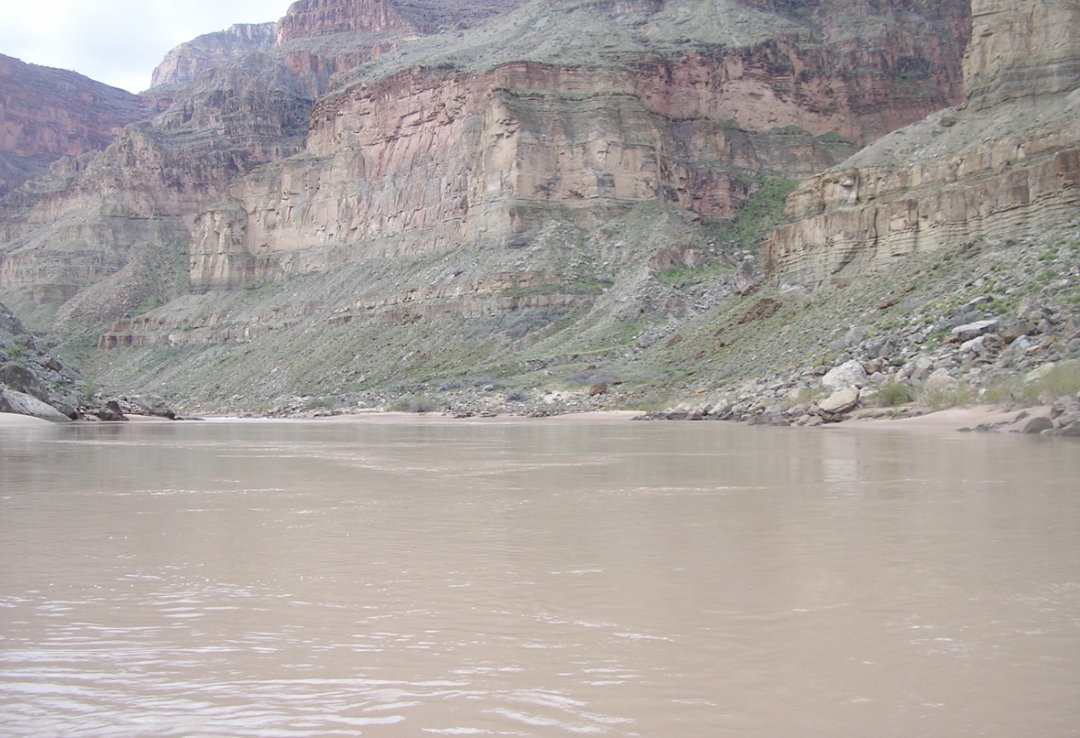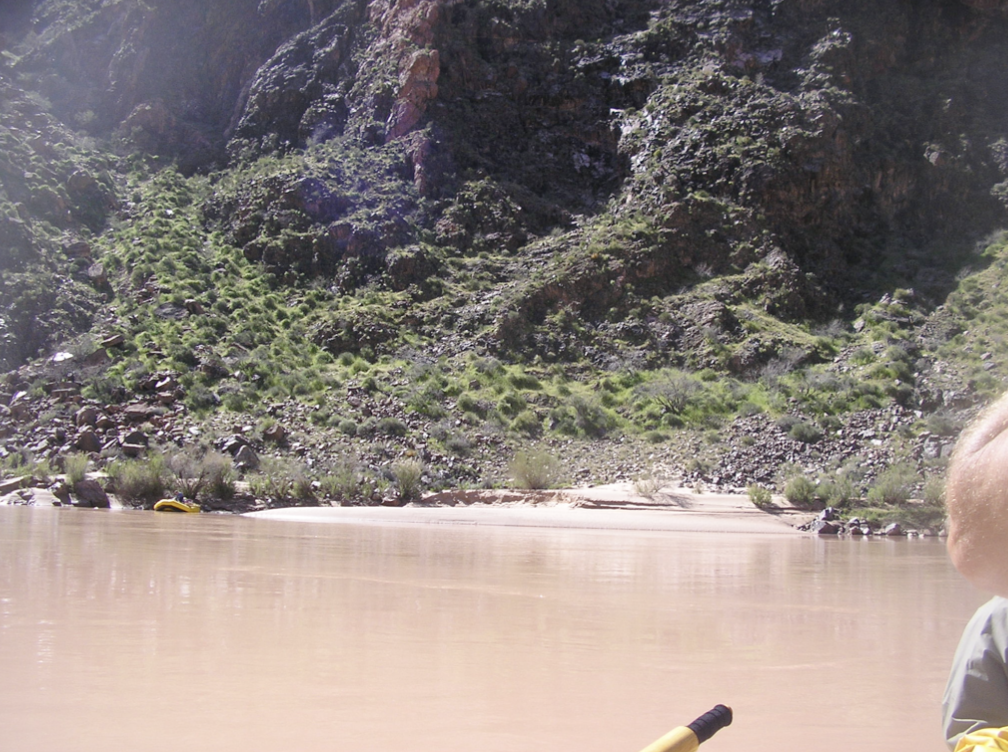PROBLEM
The November flood of 2004 was only partially successful in creating backwater habitat for native fishes in some locations. We have noticed that some of the created backwaters were not sustainable since the present high-fluctuation flows (5,000 cfs to 20,000 cfs at Glen Canyon Dam) are unable to reach them or are drained during the 5,000 cfs flows. Some locations such as the area we observed at Fish Tail Canyon show that the November flood may have even eroded away backwater habitat that was previously there. As a result, we have noticed that in some places the November flood along with the subsequent fluctuating flows may have decreased habitat complexity and even has decreased the number of backwaters used by native fishes. Post-flood flows should focus on creating constantly submerged backwater areas which is the main factor in the formation and sustainability of backwater habitat.
SOLUTION
It may be possible to create backwater habitat by moving rock debris in locations where there is a high potential for sediment deposition. We’ve noticed that locations with suitable fish habitat have the following physical characteristics.
-
Upstream constriction which increases stream velocity to resuspend sand for downstream deposition.
-
A wide channel downstream from the upstream constriction that would reduce the stream velocity and allow for deposition.
-
Downstream constriction that creates a backwater eddy that can accumulate sediment deposits.
-
A bend in the river which allows for a greater potential for forming a larger eddy due to larger lateral forces.
We’ve found some locations which could be manipulated such that it may increase the potential for sediment deposition and possibly create suitable habitat for fishes. Figure 1 shows an upstream constriction followed by a wide open channel. Figure 2 shows substantial rock debris which would provide the substrate for building the downstream constriction.
LOGISTICS
The most cost effective, yet most damaging way would be to move the rock debris by using explosives to blow up part of the canyon walls and create a landslide into the river which would create a constriction point. This method although effective, would not be practical.
The most practical way would be to build a crane using heavy equipment shipped from upstream using motorized boats. Several motorized boats similar to those used by the Grand Canyon Expedition Company would be sufficient in transporting the proper equipment. The crane would have to be strong enough to transport large boulders from the walls of the canyon into the river channel. The flows during projects like this would have to be low in order to have easier sight access.
Projects which manufacture sandbars should be focused in the area below the Little Colorado River. The created backwater habitat would provide a thermal refuge and rearing habitat for juvenile humpback chub when they are displaced from the Little Colorado River.
Projects like this can be large scale or small scale. Small scale projects would build sandbars and backwater habitat similar to that seen in figure 3. Surely these projects, if successful, may not only benefit native fishes but also campers as well due to the potential for building high elevation sandbars.

Figure 1. RM 123.5, upstream constriction point followed by a wide channel are physical characteristics which would be ideal to manipulate to increase sediment deposition.

Figure 2. Rock debris on the Canyon wall at RM 123.5. Debris like this would be ideal substrate for building the downstream constriction point.

Figure 3. Small scale sandbar with backwater habitat at RM 98.5. This sandbar has similar features but on a smaller scale compared to other locations with backwater habitat such as our campsite at RM 123
